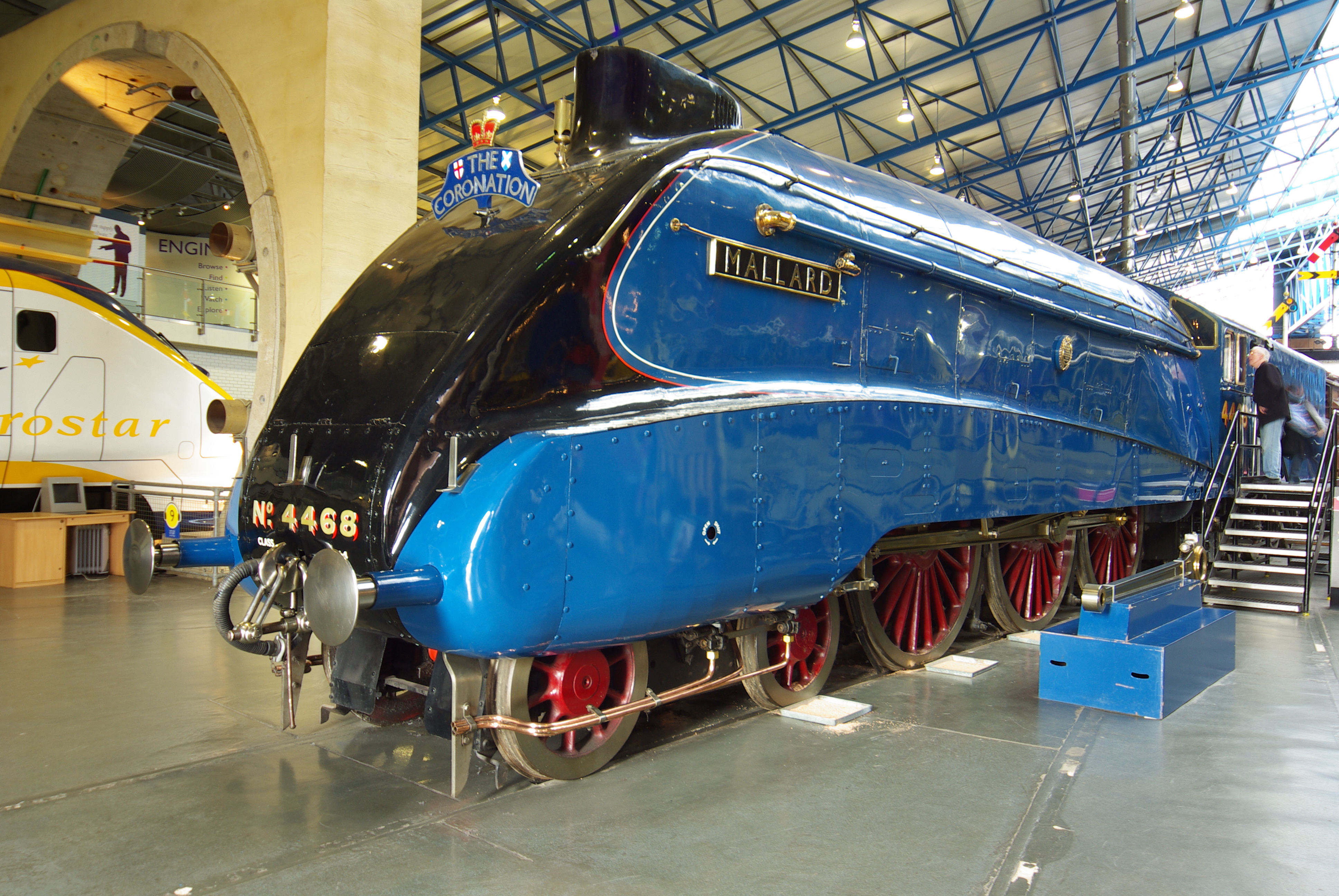Eighty years ago today a magnificent streamlined blue locomotive reached a speed of 126mph on a stretch of the East Coast Main Line in Lincolnshire, setting a world record which stands to this day.
That locomotive was “4468 Mallard”, a brand new Class A4 Pacific built in March that year for the London and North Eastern Railway (LNER) at its Doncaster works. Designed by Sir Nigel Gresley, the A4 class was built for speed, designed to power streamlined trains on some of Britain’s main rail routes.
 Despite weighing 165 tons, including its tender, and measuring 70ft long, the aerodynamic steam loco was engineered for sustained running at speeds over 100mph. Officially, British Railways maximum ‘line speed’ was 90mph, but just as modern cars can easily exceed the 70mph national speed limit, the A4 class locos could easily top the limit and routinely did.
Despite weighing 165 tons, including its tender, and measuring 70ft long, the aerodynamic steam loco was engineered for sustained running at speeds over 100mph. Officially, British Railways maximum ‘line speed’ was 90mph, but just as modern cars can easily exceed the 70mph national speed limit, the A4 class locos could easily top the limit and routinely did.
Holding the word speed record for a steam loco was a matter of national pride for Britain, especially after it was claimed by a German loco in 1936, reaching a top speed of 124.5mph. Sir Nigel Gresley was confident his high-powered and streamlined A4 class could regain the record. It was stable at high speed due to its three-cylinder design, its double chimney improved exhaust flow and its large 6ft 8ins driving wheels gave it an extra edge.
It was just a matter of finding the right opportunity, which came on Sunday July 3rd, 1938. Officially, the run was to test a new quick-acting brake system, but everyone involved knew the real reason was the quest for a new world speed record. At just four months old, Mallard was the perfect loco for the attempt, sufficiently ‘broken in’ to run freely without being overly worn.
Any experienced LNER footplate crew could have tested the new braking system, but for this run the company selected driver Joseph Duddington, renowned for taking calculated risks. He was partnered with fireman Thomas Bray, who had an uncanny knack of knowing how to ‘feed’ the firebox to coax maximum performance from the steam engine.
According to rail historian Rob Gwynne: “Duddington, then aged 61, climbed into the cab, turned his cap around – as had George Formby in the contemporary film ‘No Limit’ – and drove Mallard into the history books. He had 27 years on the footplate and had once driven the Scarborough Flyer for 144 miles at an averages speed of over 74 mph, considered at the time to be the highest speed ever maintained by steam in the UK.”
The 126mph record was achieved on the slight downward grade of Stoke Bank, south of Grantham, on the approach to Essendine Junction. Afterwards, Duddington said he believed a speed of 130mph was possible if a longer section of suitable railway line had been available. He had to slow the loco to pass through Grantham before building speed and then brake for the approaching Essendine Junction.
Mallard pulled six coaches and a ‘dynamometer’ car (used to measure its speed) for the record attempt. The biggest fear was that parts of the loco’s steam engine could overheat during the attempt, and that was the case. It meant Mallard had to ‘limp on’ at reduced speed to its next main station at Peterborough, where another loco was hooked to the carriages to complete the scheduled journey to London Kings Cross. Mallard instead returned to the Doncaster Works, where investigation showed only minor repairs were needed.
LNER’s press department was primed and ready for the new record. Although Mallard didn’t make it to Kings Cross – where reporters, newsreel cameramen and photographers were waiting – her record-breaking crew did, together with LNER’s ‘top brass’. Mallard’s success made headlines worldwide and the fact she still holds the world record is testament to her remarkable design.
The historic loco continued in service for another 25 years before being retired in 1963. It was another two decades before she was fully restored between 1986 and 1988 and she now takes pride of place in the Great Hall of the National Railway Museum, in York.
